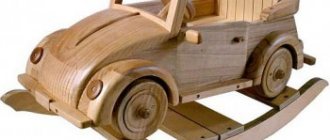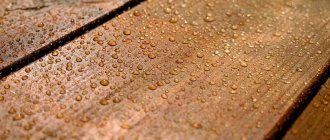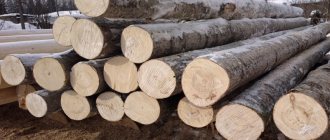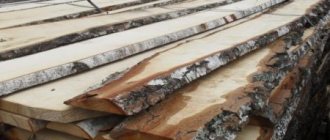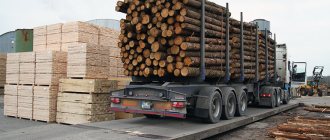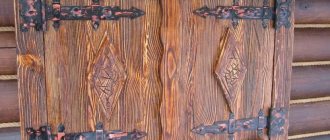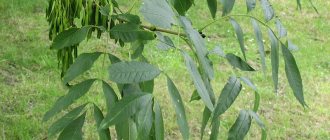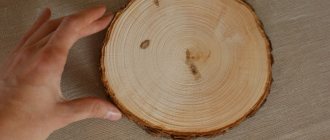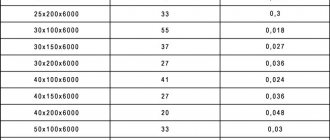Maple wood
Wood is a valuable building material with unique qualities, used by man since ancient times. And today, despite the emergence of many new building materials, wood is still widely used in construction, especially in finishing and low-rise construction. Therefore, it is so important to know the properties of different types of wood, so as not to be disappointed in the choice in the future and get the desired result.
It is necessary to have a good knowledge of the properties of various types of wood, to be able to distinguish and identify them visually and by touch, and also to properly prepare the material for work. When choosing a rock, take into account color, texture and physical characteristics, for example, hardness, resistance to rotting, impregnation.
.
Wood parts
The purpose of the root is to absorb moisture from the soil with minerals dissolved in it and transfer it through the trunk to the crown; in addition, it holds the tree in an upright position.
The purpose of the trunk is to carry moisture absorbed by the roots with mineral salts dissolved in it up into the crown; drain nutrients down; maintain reserves of nutrients necessary in the spring for the development of leaves; serve as a support for the crown.
Fig. 1 Cross-section (end) of an oak trunk: 1—bark, 2—sapwood; 3 - core; 4 - core.
The lower part of the tree trunk is called the butt, the upper part is called the apex. At the junction of the trunk and the root, there is a knot - a sharp increase in the diameter of the tree trunk over a short length. In the crown, the leaves produce organic substances - carbohydrates necessary for the nutrition and growth of the tree. The main mass of wood comes from the trunk, which makes up 70 to 90% of the tree’s volume and is used as a building material.
Our country ranks first in the world in timber reserves. Of the 3 billion hectares of forest area covering the earth's surface, Russia accounts for more than one billion hectares. Coniferous forest, the most important for construction and industry, occupies more than half of all coniferous forests in the temperate zone of the globe. Timber reserves are especially large in the north of Russia, the Urals, and Western Siberia.
The lightness and high strength of wood (tensile and compressive along the fibers), low thermal conductivity, and ease of processing contribute to the widespread use of this material and, in particular, in the construction of both capital and auxiliary and temporary structures. Along with this, wood also has significant disadvantages, namely:
- heterogeneity of structure, and consequently, unequal properties in different directions (low tensile strength across the fibers and shear strength);
- the ability to change its humidity in the air and, accordingly, its size, shape and strength;
- the ability to quickly collapse from rotting under unfavorable storage and operating conditions;
- easy flammability.
However, these wood defects can be largely eliminated by appropriate processing.
Application
Sapwood performs an insulating function in a cut tree. Subbark is reserved for chopped lumber due to its reliability and strength. It helps preserve the material from external conditions, insects, ultraviolet rays, temperature changes, and high humidity. Subbark is characterized by increased absorbency, so logs can easily be treated with an antiseptic. Russian traditional log houses are built from such lumber. Sapwood makes up the largest part in aspen, pine, and cherry.
It is important to consider that oak bark is not used in construction due to its particular fragility. In other woodworking, the sapwood is removed completely when rounded logs are needed. In the longitudinal parts of the parquet, obolon is characterized by light stripes of varying degrees of severity. Such a layer is allowed in economical production of the material and varies from 10 to 30% content. Select class parquet does not contain obolon.
Manufacturers can set their own standards and technical conditions for the presence of sapwood.
In oak varieties of parquet, the sapwood has a low content and is visible in the veins along the dies. An additional decor or design solution is manifested in materials made from ash or cherry. Exotic wood species necessarily contain sapwood, making the final material bright and extraordinary.
With the right choice of wood, buildings and parts can be preserved for up to hundreds of years. Thanks to this quality, as well as its inexpensive price, wood of various species is widely used in construction and carpentry work.
Main sections of the trunk.
To get a correct idea of the structure of wood, it is necessary to look at it in three sections:
P - end section of the trunk with a plane passing across its axis;
R—radial section of the trunk with a plane passing through the axis of the trunk along the radius or diameter of the transverse section;
T - tangential section along the chord of the cross section parallel to the axis of the trunk.
In Fig. 2. shown: 1 - radial board and 2 - tangential sawing board.
Trunk
The trunk mainly consists of cells, elongated along its length, the cells are grouped in layers, which at the end have the form of concentric rings, and in longitudinal sections (radial and tangential) inclined and parabolic lines. In the end section, starting from the periphery to the center, the following main parts of the trunk are distinguished: bark, cambium, wood and pith.
Bark isolates
The bark insulates the tree from the harmful effects of the external environment, sharp temperature fluctuations, forest pests, etc. It consists of outer layers that differ sharply from the internal layers of wood. The bark is divided into an outer layer of crust or skin, a middle layer of cork tissue and an inner bast.
Lub
The bast in a growing tree serves as a conductor of nutrients from the crown to the trunk and roots; and reserves of nutrients necessary for the tree in early spring for the development of young leaves are deposited
Bark
The bark occupies from 5 to 20% of the tree's volume. Some species, for example, cork oak, grown in the Crimea and the Caucasus, and velvet tree, growing in the Amur region and Sakhalin, have a very thick bark that has little thermal conductivity. The bark of these trees is used to make cork insulation boards and sealing stoppers, and the wood is used in carpentry and finishing work.
Cambium
The cambium is located between the phloem and the wood in the form of a very thin layer of thin-walled cells capable of division and growth. Cambium cells, dividing, annually lay phloem cells towards the bark, and wood cells towards the opposite side. In spring, the cambium produces looser wood, and denser wood in summer and autumn. The wood consists of a series of concentric layers running from the pith to the bark, from which it is separated by a cambial layer, invisible to the eye. In a cross-section of the trunk of some types of wood, one can easily distinguish the outer, lighter part of the sapwood and the inner, darker core.
Sapwood
Sapwood is a part of wood of later formation, consisting of young cells, among which there are living and dead ones. In a growing tree, moisture with minerals dissolved in it moves along the sapwood (from bottom to top), which is why the moisture content of the sapwood in a freshly cut tree is much greater than in the core. Sapwood wood in its mechanical properties is equivalent to core wood (with the same moisture content), but its resistance to decay is lower.
Core
The core consists of dead cells and is not formed immediately, but gradually, as the sapwood cells die. The kernel does not take part in the movement of nutrients necessary for the tree due to blockage of the pathways. The darkening of wood in the core is explained by the formation of various substances (resins, tannins and dyes) in wood cells. These substances make the wood of the core part more resistant to decay. Depending on the presence or absence of a kernel, tree species are divided into:
- a) sound, having a core and sapwood (oak, pine, larch, cedar, etc.);
- b) sapwood (non-core), having only sapwood (birch, alder, aspen, etc.)
From the group of sapwood species, mature wood species (spruce, fir, beech) are distinguished, in which the central part of the wood, corresponding to the position of the core, does not differ in color from the sapwood, but contains significantly less moisture in a growing or freshly cut tree.
Properties of sapwood
It is the youngest part of the trunk, through which liquid is transported to the leaves. General properties:
- contains more water than other layers;
- has the lowest density;
- exhibits instability under mechanical damage;
- easily affected by fungi and insects;
- when drying, it quickly releases moisture;
- has a high degree of shrinkage.
The growth of subbark is influenced by the variety, age and natural condition of the tree. Young wood species consist of almost one layer, but gradually the nutrient volume decreases. In mature aspen and spruce trees, the nutrient layer occupies about 50% of the wood volume, and in larch – only 25%.
Birch sapwood also occupies almost the entire trunk of the tree. The nutritional part of oak is not used in production due to its increased softness. The color of the oak core is a shade darker than the sapwood and is distinguished by its hardness. The core is widely used in various carpentry works. The subcortex is inferior to the core in terms of biological stability. At the same time, it is easier to impregnate with antiseptics and other solutions. Although the nutrient layer has excellent absorption of tinting agents, it still differs in color from the main shade of the wood.
Microstructure of wood. Wood cell structure
Microstructure is the structure of wood, visible only with significant magnification, i.e. under a microscope.
Wood consists of a very large number of living and dead cells of various shapes, sizes and purposes.
Living wood cell
consists of a shell (wall) and protoplast contents (plasma and nucleus). The cell membrane, or wall, is mainly made up of a substance called cellulose or fiber. Over time, a chemical change occurs in the fiber under the influence of plasma - lignification, associated with the formation of a special substance lignin in the shell of a living cell, due to which the shell becomes stronger, but becomes more fragile.
Rice. 3 Vessels: 1 - linden; 2 and 3 - beech; 4 - oak
Basic elements of wood fabrics
The main elements that make up the organic part of wood tissue are carbon, oxygen, hydrogen and nitrogen. Chemical composition of dry wood: C - 49.5%, O and N - 44.2% (including nitrogen about 1%), H - 6.3% Cellulose in its pure form is insoluble in water, alcohol, gasoline, ether . When wood is exposed to hot acidic or alkaline solutions under high pressure conditions, lignin and other carbohydrates (hemicellulose) go into solution, but cellulose does not dissolve. This is the basis for the production of cellulose from wood.
Classification of wood cells.
Wood cells can be classified according to the functions they perform:
- a) conductive;
- b) support (wood fibers);
- c) hoarders.
Rice. 4. Cell arrangement in coniferous wood: 1—in early wood; 2 - in late wood
Vessels and tracheids that conduct cells.
Water with dissolved minerals passes through these cells along the trunk from the roots to the branches and leaves. The vessels are thin-walled, wide-cavity tubes, located vertically one above the other and having completely or partially lost their transverse walls (Fig. 3). The diameter of the vessels is from 0.04 to 0.3 mm; the average length is about 100 mm, but in some cases it reaches 2-3 m. Tracheids are elongated cells up to 10 mm long and 0.01-0.3 mm thick (cells in cross section are polygonal in shape).
Coniferous wood
Coniferous wood consists mainly of tracheids, occupying 90-95% of the total wood volume. The sizes of tracheids within the same annual layer are not the same; Early wood tracheids have a relatively wide cavity and a thin wall, while late wood tracheids have a narrow cavity and a thick wall (Fig. 4). On the lateral surfaces of tracheids, as well as vessels, there are microscopic openings - pores f and h (Fig. 3), through which they communicate in the transverse direction.
Rice. 5. Wood fibers: 1—less thickened (linden); 2—very thickened (beech).
Tracheids
Tracheids in conifers are both water-conducting and supporting tissue; mechanical properties of wood are directly dependent on the strength of latewood tracheids. Deciduous wood contains wood fibers that are narrow and relatively thick-walled, elongated; cells with pointed ends. Thanks to these thick-walled; and strong elements, their tight connection with each other and uniform distribution throughout the annual layer, these cells give hardwood the necessary strength.
The supporting tissue in the trunks of deciduous trees is wood fibers (Fig. 5), and in coniferous trees the tracheids of late wood. Storage cells are located mainly in the medullary rays. These cells serve to transfer nutrients to living cells. In addition, they store reserves of these substances for the winter. The connection between these cells and neighboring cells is fragile.
In Fig. Figure 6 shows a diagram of the structure of spruce wood, which shows the nature of the arrangement of cells in end, radial and tangential sections.
Rice. 6. Location of cells in spruce wood: 1—late wood cells; 2— early wood cells; 3 - storage cells of the medullary rays; 4 - pores in cell walls.
Strength
Strength is the ability of wood to resist destruction under mechanical loads. It depends on the direction of the applied load (tension, compression, bending, chipping), wood type, density, humidity, presence of defects and is characterized by tensile strength - the stress at which the sample is destroyed.
The average tensile strength along the fibers of all rocks is 130 MPa. The tensile strength along the grain is greatly influenced by the structure of the wood. Even a slight deviation from the correct arrangement of fibers causes a decrease in strength.
When stretched across the grain, the strength of wood is very low and on average is 1/20 of the tensile strength along the grain, i.e. 6.5 MPa. When compressed along the fibers, the deformation is expressed in a slight shortening of the sample. The compressive strength of wood across the grain is approximately 8 times lower than along the grain.
Structure of tree rings and wood core
Core
The core is sometimes not located in the center of the cross-section of the trunk and runs along its entire length. It consists of cells with thin walls and is a loose tissue of primary formation; it is very weak, fragile and easily rotting. Often, rotting of a tree trunk begins from the core, then spreads to the annual layers adjacent to it and a hollow forms in the trunk.
The pith and the woody tissue formed in the first year of tree development form a pith tube, which is not equally developed in all species; for example, maple and ash have a wide tube, while larch and cedar have a narrow one. In lumber - boards and bars up to 50 mm thick, intended for stretched and bending elements of load-bearing structures, the core is not allowed.
Annual layers.
Tree growth occurs only during the growing season (in the temperate zone in spring, summer and autumn).
Each annual layer consists of two zones: early, formed in spring (light part), and late (dark part), formed by the end of summer.
Early wood is more porous and weaker, late wood is a denser and stronger part of the annual layer. It is often believed that fine-grained wood is stronger and better than large-grained wood. However, this statement is not always true, since the strength of most wood species does not depend on the width of the layer, but on the degree of development of late wood. The more late wood is developed in the annual layers, the better the material.
The annual layers may be clearly visible, faintly visible, or not at all visible to the naked eye. The annual layers of conifers (pine, larch, etc.) are clearly visible due to the different density and color of late and early wood. The early wood of oak and ash stands out especially sharply, since it consists of thin-walled and wide-cavity elements.
Softwood
They have a fairly light structure, so they can generally be processed without any problems. Coniferous trees are used to produce a variety of lumber, building elements, furniture, and decorative elements.
Coniferous wood is resistant to rotting and has antibacterial properties, which makes it relevant for capital wooden house construction, the construction of log bathhouses or reliable outbuildings.
Pine
Features of wood
Pine wood has a sufficient degree of resin, is moisture resistant, not very susceptible to rotting, has high air permeability and ideal sound absorption properties.
The density and specific gravity of wood directly depends on the conditions in which pine grows. Trees grown on dry soils, especially sandy ones, produce dense wood with annual rings as closely spaced as possible - it is very valuable in construction.
Pine, which grew in places with high humidity, most often has a loose woody structure, which means that it is definitely not suitable for the construction of structures with a load-bearing load, but it will definitely find use in the process of construction work.
Pine cut.
Technological properties
Density: 470 kg/m3.
The pine trunk is almost always straight, this ensures comfortable sawing. Freshly cut pine can be sawed without difficulty, but when dried it splits into chips, which can significantly complicate the processing process.
Application
Pine wood glues easily, so it is successfully used in the production of laminated veneer lumber and in the furniture industry. It is used in the process of manufacturing doors, door and window frames, platbands, and is indispensable in the construction of log houses of residential buildings or baths.
Pine window.
Spruce
Features of wood
A low-resinous, mature wood species of light yellow color is inferior to pine wood in terms of moisture resistance and thermal conductivity. Unfortunately, solid spruce logs or spruce-based lumber rot more quickly and are less durable due to the soft structure of the wood.
Spruce cut.
Technological properties
Density: 450 kg/m3.
This wood is not very easy to process, since the spruce trunk has significant knots. However, this disadvantage of spruce wood is fully compensated by its resistance to cracking and deformation, as well as easy gluing, staining and painting.
Application
The main use of spruce wood is the construction of wooden houses and the production of various lumber.
Spruce house.
Cedar
Features of wood
Color - from pink to pink-yellowish, the intensity of the wood tone depends on the age of the tree and changes over time, becoming more impressive, beautiful and noble. High-resin cedar wood does not deform, does not rot, is not affected by wood-boring beetles, and is not afraid of temperature changes and exposure to chemically aggressive environments.
Cedar cut.
Technological properties
Density: from 426 to 455 kg/m3 (depending on the location of the tree).
Due to its plasticity, cedar wood lends itself well to processing, which makes it possible to embody the most daring design ideas in terms of wooden house construction.
Application
Typically, cedar is used as a material for spectacular finishing when creating luxury interiors or as decorative elements of furniture. Despite the ideal heat and sound insulation parameters of cedar wood, it is not always advisable to use it in the construction field, given the significant high cost of the material.
Bathhouse trimmed with cedar.
Larch
Features of wood
It belongs to the heartwood species, it is distinguished by a red-brown core, light-colored sapwood with very contrasting growth rings, which give the wood a versatility of color palette.
Larch wood does not absorb moisture, it is not afraid of attacks by insects and molds, it does not rot and has very high fire resistance.
Larch cut.
Technological properties
Density: 640 kg/m3.
The impressive strength indicators and high resin content of this wood create some difficulties in its processing, especially by machine. An important point: to prevent larch from splitting and suddenly “spreading” with numerous cracks when cutting, scrupulous adherence to a special and rather labor-intensive drying regime is required.
Application
Larch wood is widely and successfully used in construction, in particular for the construction of log buildings of wooden buildings, which will subsequently be operated in conditions of very high humidity or even in direct contact with water.
Floors, solid load-bearing walls, furniture made of larch wood or finishing of any products with larch veneer serve flawlessly for decades without losing their original shape and their original attractiveness.
Larch board.
Fir
Features of wood
Low-resin, light, quite soft and flexible in structure coniferous species. A small amount of resins, unfortunately, gives this wood disadvantages such as warping and rotting at high humidity. However, the incredibly beautiful texture of fir wood and resistance to impact loads smooth out these shortcomings.
Fir cut.
Technological properties
Density: 380 kg/m3.
Fir wood is very easy to process and can be stained, painted and coated with varnish without any problems.
Application
It is relevant in the process of erecting rafters; it can be used for internal wall cladding or to create reliable partitions in a room. Fir wood harmoniously reveals its beauty and grace in decorative elements of furniture or in the openwork nuances of wooden architecture.
Fir board.
Vessels, resin ducts, medullary rays
In deciduous wood, for the movement of moisture, in addition to cells, there are also larger elements - vessels; they are shaped like tubes running along the tree trunk. On the smooth, well-planed end surface of wood of oak, ash, elm, elm, etc., one can notice that large vessels are located in the early wood and are collected in a ring, which is why these species are called ring-vascular. The late wood of these species also has vessels, but they are smaller and therefore not visible to the naked eye.
Deciduous trees such as birch, alder, beech, hornbeam, maple, aspen, linden, etc., do not have large vessels and therefore their early and late wood do not differ sharply; They are characterized by small vessels scattered across the entire width of the annual layer. These breeds are called disseminated vascular.
Core rays: 1 - on a transverse section of the trunk; 2—on the radial; 3—on tangential.
The latewood of this group of deciduous species is bordered by a narrow strip of thick-walled cells separating one layer from the other. Coniferous trees, unlike deciduous trees, do not have vessels, but consist mainly of closed, relatively long cells.
Resin passages
In most conifers, resin is concentrated in the spaces between the cells, in the so-called resin ducts. Resin passages are located mainly in late wood. On an end section, resin passages are visible under significant magnification, but on longitudinal sections (especially on the sapwood part) they can be detected in the form of dark lines even with the naked eye. The resin protects the wood from disease when the trunk is damaged.
Core rays
On a cross-section of the trunk of such species as oak, beech, maple, etc., narrow radial lines are noticeable - the so-called core rays. On a radial section they appear as light or dark stripes; they are often interrupted because they deviate from a strictly radial direction. On a tangential section, the heart-shaped rays look like dark strokes with pointed ends located along the length of the trunk. In conifers they are usually very narrow and visible only under a microscope.
Classification of wood according to resistance to decay
Decay resistance classes are prescribed by GOST 20022.2-80. The following classes of rot resistance are divided:
- Rot-resistant sapwood of pine and ash. Kernel of cedar, ash, pine, larch, oak
- Moderately resistant to decay - sapwood of cedar, fir, spruce, larch. Spruce, beech, fir kernels
- Low resistance to decay - sapwood of birch, beech, oak, hornbeam, elm, maple. Kernel of elm, maple.
- Not resistant to rotting - linden and aspen sapwood. Birch, aspen, linden kernels
Sapwood mushroom stains
- Sapwood mushroom stains
are abnormal colors of sapwood without reducing the hardness of the wood.
Increases water permeability, destroys adhesives and paints. Classified by: color: blue
- gray color of the sapwood and, rarely, the heartwood, bluish or greenish tints.
It usually appears in felled wood as it slowly dries out: log blue
occupies the sapwood of unbarked logs that have lain warm for a long time; - blue stain
appears when lumber is stored in a warehouse, first in the form of spots and stripes, and then can occupy the entire surface of the material. Reduces the impact strength of wood;
- orange, yellow, pink (to light purple) and brown colors. Found together with blue or separately:
- brown coloring
, or
coffee darkening
, is caused by the fungus Discula brunneotingens and affects coniferous wood, most often pine, larch and spruce.
Can mask the appearance of sapwood rot
;
, or
pinkishness,
affects both coniferous and deciduous wood, and is caused by various fungi.
The most common fungus is Corticium laeve of the Thelephoraceae family ,
which colors the wood deep pink or light orange, disappearing when it dries in daylight.
Fungi of the genus Fusarium ( Fusarium
) give wood pink, red and crimson tones. When infected with the fungus Epicoccum purpurascens, bright purple surface spots appear on debarked coniferous wood;
, or
mushroom yellowness,
is lemon-yellow spots and stripes that usually disappear when dried. This coloration is caused by a fungus of the species Verticillium glaucum. Another species, Trichoderma lignorum, produces a superficial greenish-yellow coloration.
- light
- not masking the texture, and
- masking texture;
- superficial
- no deeper than 2 mm;
- penetrating deeper than 2 mm;
- at a distance from the surface of the assortment;
